Coconut Curry Salmon
Dive into bold, vibrant flavor with this Coconut Curry Salmon—a dish that brings together tender, flaky salmon and a luxuriously creamy coconut curry sauce. Infused with warming spices, fresh ginger, garlic, and a touch of lime, each bite is layered with savory depth and gentle heat. The richness of the coconut milk balances perfectly with the natural richness of the salmon, creating a dish that’s both comforting and exotic. Served over rice or with warm naan, it’s a restaurant-worthy meal that comes together effortlessly in your own kitchen.
Coconut Curry Salmon
Ingredients
Method
- Grab your salmon fillets and season them generously with salt and pepper. Next, heat up your skillet over medium heat and add the oil. Once the oil is nice and hot, it's time for the salmon! Place the fillets in the skillet, skin-side down. Let them sizzle away for about 5 minutes, until that skin gets beautifully golden and crispy. Flip them over and cook for another 5 minutes, or until the salmon is cooked through. Transfer the salmon to a plate, and you're ready for the next step!16 oz Salmon filets, 1 Kosher Salt, 1 Ground Black Pepper, 1 Tbsp Vegetable oil
- Place the skillet back on the stovetop over medium heat. Add the shallots and cook, stirring occasionally, until they become soft and golden brown, about 3 minutes. Next, add the curry paste, minced garlic, and ginger to the skillet. Cook for another minute, stirring constantly, until the paste is fragrant and has deepened in color. Reduce the heat slightly and slowly whisk in the coconut milk, ensuring it is fully incorporated into the sauce. Then, add the sriracha and fish sauce. Bring the sauce to a gentle simmer. Carefully return the salmon fillets to the skillet, nestling them into the sauce. Allow the salmon to simmer until it flakes easily with a fork and reaches an internal temperature of 145°F. This should take about 15 minutes, depending on the thickness of the salmon. As the salmon simmers, spoon the sauce over the fillets occasionally to ensure they are well coated and infused with flavor. Taste the sauce and adjust the seasoning by adding more sriracha or fish sauce as needed.1 Shallot, 1 Tbsp Red curry paste, 2 Cloves Garlic, 1 tsp Ginger, Fresh, 14 oz Coconut milk, 1 Tbsp Sriracha, 1 Tbsp Fish sauce
- And there you have it! Spoon that amazing sauce over the salmon – don't be shy! Serve it up with a generous portion of fluffy rice. A squeeze of lime and a sprinkle of cilantro add the perfect finishing touch. Dig in and enjoy!1 Rice, 1 Lime, 1 Fresh Cilantro
Nutrition
Notes
- Freshness: Look for salmon fillets that are firm, brightly colored, and have a fresh, mild scent. Avoid any with a strong fishy odor or discoloration.
- Skin on or off: While skin-on fillets provide extra flavor and texture, skinless fillets work well too.
- Sustainability: Consider purchasing sustainably sourced salmon to support responsible fishing practices.
- Don't overcrowd the pan: Give the fillets enough space in the skillet to ensure even cooking and browning.
- Adjust cooking time: Cooking time will vary depending on the thickness of the fillets and your stovetop. Aim for an internal temperature of 145°F (63°C) for food safety.
- Avoid overcooking: Overcooked salmon can become dry and tough. Aim for a moist and flaky texture.
- Curry paste: Use your favorite red or yellow curry paste. Adjust the amount to your desired level of spiciness.
- Aromatics: Fresh ginger and garlic are key to building flavor in the sauce.
- Coconut milk: Use full-fat coconut milk for a rich and creamy sauce.
- Balancing flavors: Taste the sauce and adjust the sriracha and fish sauce to achieve the desired balance of sweet, salty, spicy, and sour.
- Simmering: Simmering the salmon in the sauce allows it to absorb the flavors fully.
- Rice: Serve with fluffy white or brown rice to soak up the delicious sauce.
- Garnishes: Fresh cilantro, lime wedges, and chopped peanuts add brightness, acidity, and texture.
- Sides: Consider serving with additional sides like steamed vegetables or a simple salad.
- Make it ahead: The curry sauce can be made ahead of time and reheated.
- Storage: Leftovers can be stored in the refrigerator for up to 3 days.
- Adapt to your taste: Feel free to adjust the ingredients and spices to your liking. You can add vegetables like bell peppers, onions, or spinach to the sauce.
Tried this recipe?
Let us know how it was!Ingredients
- 16 oz Salmon fillets
- 1 tsp Kosher salt
- 1 tsp Ground black pepper (freshly ground)
- 1 Tbsp Vegetable oil
- 1 Shallot, thinly sliced
- 1 Tbsp Red curry paste
- 2 Cloves Garlic, minced
- 1 tsp Fresh ginger, minced
- 14 oz Canned coconut milk
- 1 Tbsp Sriracha
- 1 Tbsp Fish sauce
- Cooked rice (for serving)
- 1 Lime, cut into wedges (for serving)
- Chopped cilantro (for serving)
Image Gallery Coconut Curry Salmon
Storage & Leftovers
Storage:
Refrigerator: Store cooled leftovers in an airtight container in the fridge for up to 3 days. Keep the salmon and curry sauce together for maximum flavor, or separate them if you prefer to reheat individually.
Freezer: While the curry sauce freezes well, the texture of salmon can change slightly after freezing. If freezing, do so in portions and use within 1 month for best results.
Reheating:
Stovetop (Recommended): Reheat gently over medium-low heat in a skillet, adding a splash of water or coconut milk to loosen the sauce. Heat until warmed through, about 5–7 minutes.
Microwave: Place in a microwave-safe dish, cover loosely, and heat in 30-second intervals, stirring between rounds to avoid overcooking the fish.
Tips:
Avoid high heat to keep the salmon from drying out.
Leftovers are perfect for grain bowls, stuffed pitas, or as a topping for coconut rice.
For added freshness, squeeze a little lime juice or sprinkle chopped cilantro before serving again.

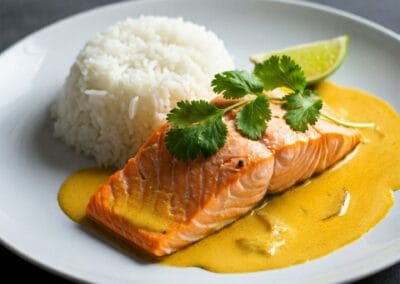
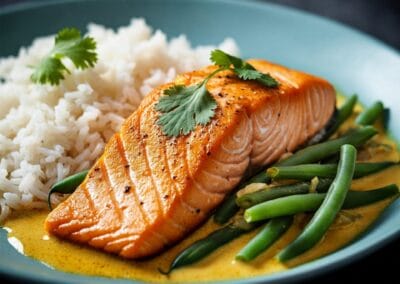
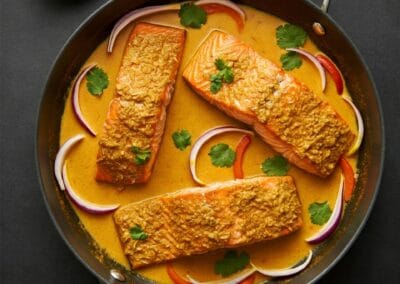
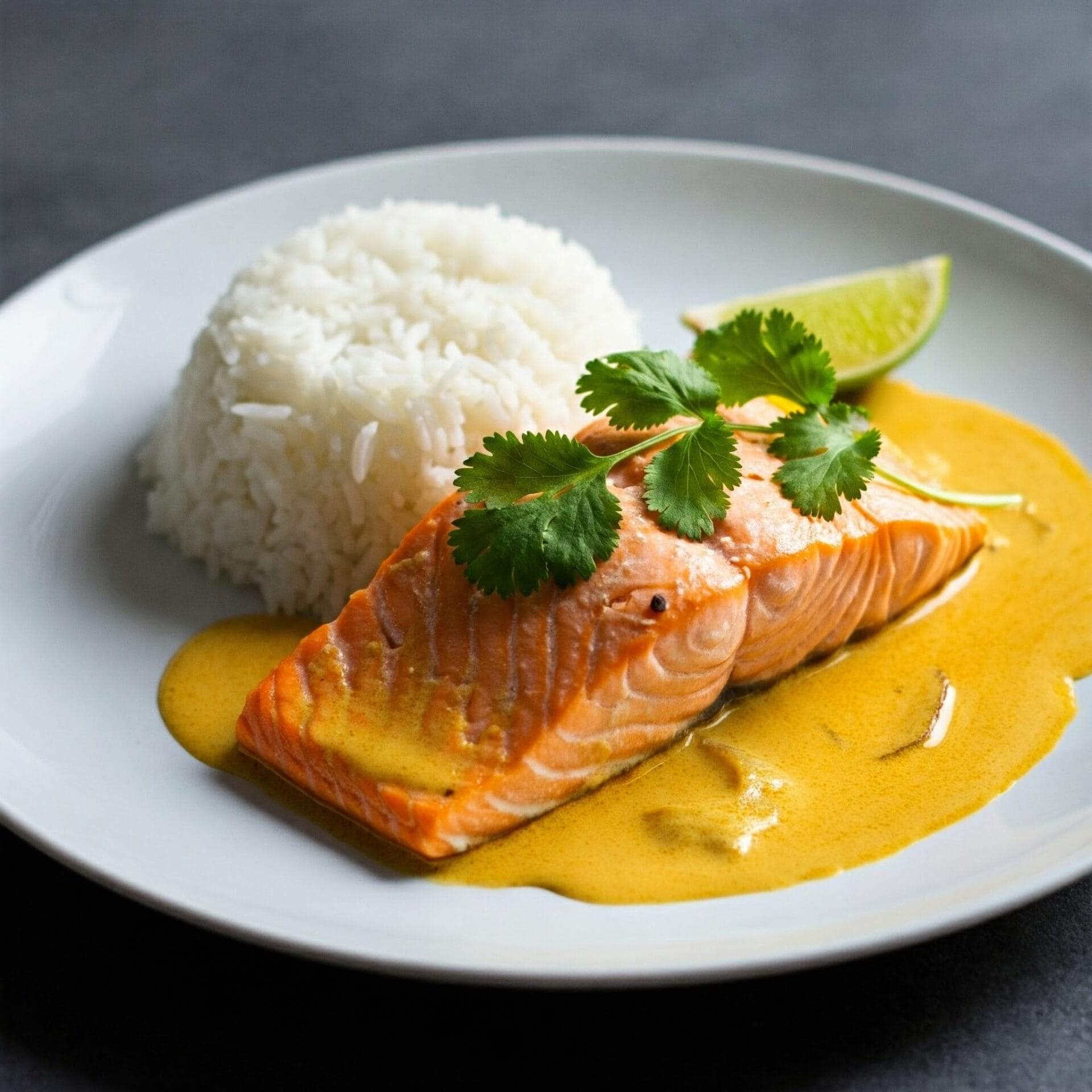







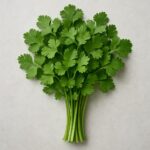
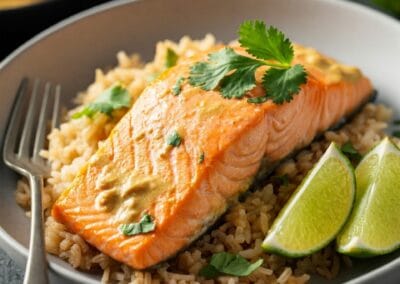
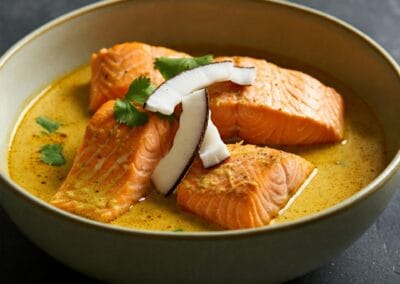

0 Comments